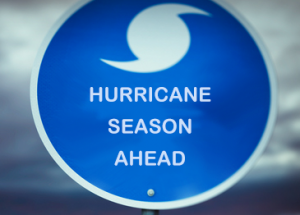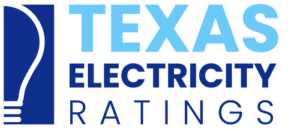
Prepare Now for a Busy 2020 Hurricane Season
The 2020 hurricane season will officially begin one month from now on June 1. And since this year’s winter was one of the warmest in North America without the help of an El Niño, Texas residents might see the impact of at least one tropical storm this summer.
As if Covid-19 wasn’t enough to contend with…
The annual hurricane season spans the period from June 1 to November 30. However, tropical storms can develop outside those months with some as early as January and others as later as December.
Though the National Oceanic and Atmosphere Administration (NOAA) National Hurricane Center doesn’t release their annual hurricane forecast until the end of May, several other hurricane forecasts come out each April. These are released by meteorological researchers at the Department of Atmospheric Science Tropical Meteorology Project at Colorado State, Accuweather, Topical Storm Risk at the Department of Space and Climate Physics at University College London, and the Weather Company.
Hurricane Predictions, 2020
| NOAA Prediction |
CSU Prediction |
Accuweather Prediction |
Weather Co Prediction |
TSR Prediction |
Seasonal Average 1981-2010 |
|
| Number of named storms (winds 39 mph+) |
N/A | 16 | 14-18 | 18 | 16 | 12 |
| Storms becoming hurricanes (winds 74 mph+) |
N/A | 8 | 7-9 | 9 | 8 | 6 |
| Major hurricanes (Cat. 3, 4 or 5, winds 111 mph+) |
N/A | 4 | 2-4 | 4 | 3 | 3 |
Colorado State released its annual hurricane forecast back on April 2 saying they expect “above-normal activity”. In addition, they stated, “We anticipate an above-average probability for major hurricanes making landfall along the continental United States coastline and in the Caribbean.” They also added there is a 44% chance for one major storm to come ashore along the Gulf coast stretching from the Florida Panhandle all the way to Brownsville, TX.
Accuweather predicts an “above-average activity” and predicts 2-4 impacts on the U.S. coast.
Weather Co. sees a season “more active than usual” and adds the dire warning that “there is still some upside to these numbers, and that a ‘hyperactive season’ like we had in 2010 and 2017 is still in play.” The 2010 hurricane season saw 19 tropical storms with 12 becoming hurricanes. The 2017 hurricane season spun up 17 tropical storms, 10 of which became hurricanes and included major storms Harvey, Irma, Maria, and Nate.
Tropical Storm Risk. com (TSR) calls for “above-norm activity” and that there may be more late-season season storms, noting “environmental fields in August-September 2020 that are more favourable for Atlantic hurricane activity than thought previously. ”
Very Active Atlantic Hurricane Season
So, the consensus sees an active, if not very active, storm season ahead: 14 to 18 tropical storms with at least 7 becoming full sized hurricanes, and 2 to 4 of those will be major. Storm ferocity aside, with these numbers it’s safe to say that Texas electricity customers could likely experience power outages related to at least one of these storms this summer.
It’s important to bear in mind that the Seasonal Average (1981-2010) for tropical storms is 12 with 6 becoming full sized hurricanes. But like any weather forecast, conditions can change. For example, the 2019 hurricane season was originally forecast to be near-normal. It started out quiet with only two storms in spite of a very warm Atlantic. It stayed quiet only until August 8 when the El Niño faded out. That brought an almost-sudden change within one week when storms began rising out in the eastern Atlantic and Caribbean. By November, there had been a total of 16 tropical storms, 5 of which were hurricanes, and 3 of those major ones.
So why so many hurricanes expected this year?
Why El Niño Affects Atlantic Hurricanes
The key to the sudden eruption of storms last year was that while the Atlantic was full of very warm water, the El Niño early last summer produced enough puff cause wind shearing in the western Atlantic. However, once the El Niño faded out, the storms came quickly. During the few storms that made landfall in the US, some residential electricity customers in the southeastern US went without power for days.
This year, there’s no El Niño at all.
El Niño, or El Niño Southern Oscillation (ENSO) as it’s technically known, occurs in the Pacific Ocean when a layer of warm water that is normally west of the international date line shifts eastward at the equator toward South America. The warm water warms the atmosphere and shifts the Walker Circulation eastward. When the Walker Circulation shifts eastward, it increases the likelihood of down-rushing wind shears over the western Atlantic and Caribbean —right into the cradle of Atlantic hurricanes. Hurricanes operate by moving warm, moist air up through their center but they need calm winds to stay organized. El Niño wind shears blow vertically across their rotating structure. This disperses their heat until the hurricane falls apart. It’s almost like standing over a candle and blowing it out.
Why No El Niño This Year?
Generally, sea surface temperatures (SSTs) in the ENSO monitoring zones roughly need to be consistently .5°C above average or higher to start affecting atmosphere circulation. This year in the Nino 3.4 region (about mid-Pacific), SSTs have been consistently above-normal since October but fluctuating between .2 and .9 Celsius above normal (“bubbling” about .5°C). However, all that fluctuation may have missed linking up with Pacific wind patterns that typically cause the shift into an El Niño.
Instead, we have what’s called ENSO Neutral (or “La Nada”). During summer, La Niña and ENSO Neutral conditions can shift the Walker Circulation westward so that instead of wind shear blowing down in the western Atlantic, there’s more likely to be little vertical wind shear and lots of nice, calm air— which is the very stuff hurricanes thrive on.
Forecasters are also predicting that this current ENSO neutral condition could go cold in the autumn and change to a La Niña. And since that will affect your Texas electricity usage, we’ll take that up later.
How Warm Water Affects Hurricanes
The second factor at work is that there’s LOTS and LOTS of warm water in the Main Development Region (MDR) of the tropical Atlantic. The MDR spans the tropical Atlantic Ocean from west Africa to the Caribbean. When sea surface temperatures (SSTs) get above 80°F (26.5°C) it creates a dangerous bath water. The combination of heat and evaporating sea water rising into the air pulls in more air and heat behind it, increasing the potential for tropical storm formation.
Current Atlantic basin SSTs between the equator and north into the Gulf of Mexico are above-average for this time of year, running about 78° to 80°F. There’s much warmer water off the coast of west Africa stretching west to the Caribbean. Just off the U.S. east coast, SSTs are in the 70s. NOAA’s Global Climate Report for March said that Atlantic sea-surface temperatures were at record-warm levels.
—And it’s only May.
Considering the effects of so much warm water in the Atlantic MDR and the low likelihood of strong wind shearing in the western Atlantic, there seems a high probability that there will be an above-average Atlantic hurricane season and that at least one storm will hit the U.S.
Where, when, and what strength that storm will be is impossible to say. But, as the annual warning goes, it only takes one tropical storm to cause a tragedy. So, it’s best for Texas residents to get prepared.
How To Prepare For A Hurricane
For coastal residents, an above average hurricane season means there’s a good chance they will need to evacuate at some point this summer. That’s especially true for Texas and other Gulf coast states where storm surges have a history bringing flood waters 10 to 24 feet deep. Because both storm surge and rising high-tide levels are exerting increasing impacts on coastal flooding events, NOAA has unveiled some useful new prediction tools this season, including a map showing expected storm surge inundation values for the United States Gulf and Atlantic coasts.
For those who live further inland, high winds, tornados, and flooding are all potential dangers. Flash flooding is extremely dangerous in areas like central and west Texas and in the Appalachian states where rain-fall in steep-sided river valleys can flood entire towns in moments. That’s why we want all Texas energy customersto know what to do this hurricane season.
How Can I Prepare for Hurricane Season?
Hurricanes and other kinds of powerful storms can hit any state in the U.S. There was even a Super Derecho in 2009 that on radar actually resembled a hurricane over Kansas and Missouri. The most important thing you need to do is to have a plan for keeping your family safe. Start preparing to weather the worst storm safely now.
1 Make a plan so your family knows for what to do when a tropical storm comes your way.
2 Make a Hurricane Safety Checklist to help you keep track of how to prepare and what supplies you’ll need if you choose to shelter in place.
4 Gather essential stuff for your grab ‘n’ go bag. Each person and pet should have their own.
5 Understand Texas evacuation routes ahead of time. Make arrangements well ahead of time where you’ll go to in the event of an evacuation order.
6 If you know someone who might need assistance during a disaster, please register now for the State of Texas Emergency Assistance Registry (STEAR), a free registry that provides local emergency planners and responders with additional information about needs in their communities.
